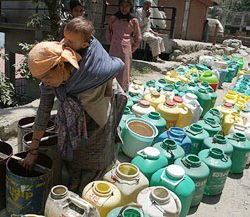The naturally occurring water from the sources like rain, rivers, under the ground, water streams, etc. is base of life on our beautiful planet. Water is just not water. It has all the life-supporting nutrients- Calcium, Magnesium, Sodium, Copper, Selenium, Potassium. But along with it, there is one more element whose presence can be found in naturally occurring water – Uranium
What is Uranium?
Uranium is a chemical which is silvery-grey metal with weak radioactive in nature. We can see Uranium in ammunition (high-density penetrators) and as a fuel for nuclear power plants (It is to be noted that naturally occurring Uranium is found in different variance, with different levels of radioactive intensity). The Uranium in nature is found in soil and rocks.
Interestingly, a very small amount of Uranium is found in water as well, with the concentration varying from region to region. The amount of Uranium in the water depends on the type of minerals in the soil and bedrock.
For instance, the average concentration of Uranium in water is comparatively higher in the granite bedrock. […]





